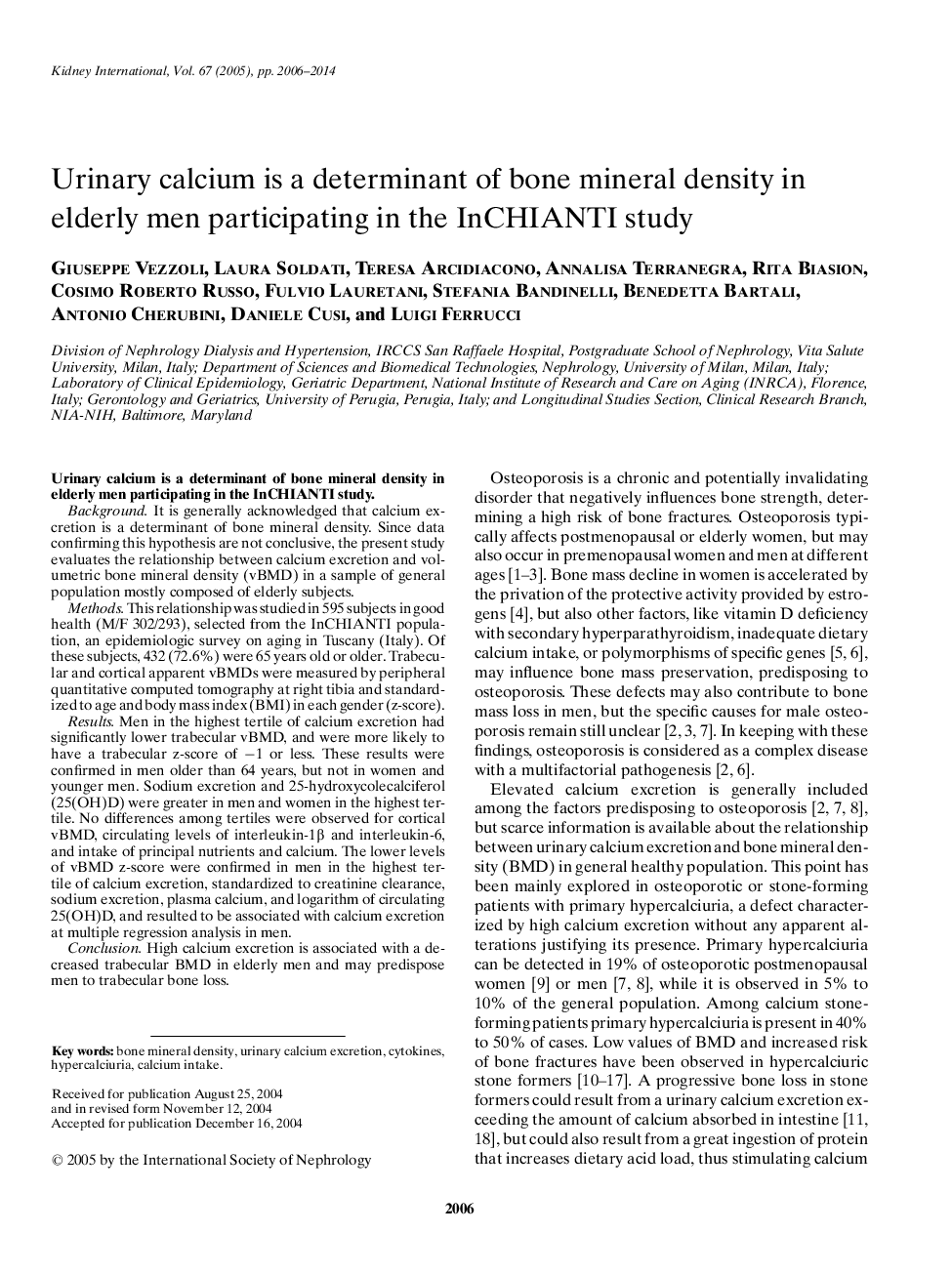| کد مقاله | کد نشریه | سال انتشار | مقاله انگلیسی | نسخه تمام متن |
|---|---|---|---|---|
| 3886604 | 1249554 | 2014 | 9 صفحه PDF | دانلود رایگان |

Urinary calcium is a determinant of bone mineral density in elderly men participating in the InCHIANTI study.BackgroundIt is generally acknowledged that calcium excretion is a determinant of bone mineral density. Since data confirming this hypothesis are not conclusive, the present study evaluates the relationship between calcium excretion and volumetric bone mineral density (vBMD) in a sample of general population mostly composed of elderly subjects.MethodsThis relationship was studied in 595 subjects in good health (M/F 302/293), selected from the InCHIANTI population, an epidemiologic survey on aging in Tuscany (Italy). Of these subjects, 432 (72.6%) were 65 years old or older. Trabecular and cortical apparent vBMDs were measured by peripheral quantitative computed tomography at right tibia and standardized to age and body mass index (BMI) in each gender (z-score).ResultsMen in the highest tertile of calcium excretion had significantly lower trabecular vBMD, and were more likely to have a trabecular z-score of -1 or less. These results were confirmed in men older than 64 years, but not in women and younger men. Sodium excretion and 25-hydroxycolecalciferol (25(OH)D) were greater in men and women in the highest tertile. No differences among tertiles were observed for cortical vBMD, circulating levels of interleukin-1β and interleukin-6, and intake of principal nutrients and calcium. The lower levels of vBMD z-score were confirmed in men in the highest tertile of calcium excretion, standardized to creatinine clearance, sodium excretion, plasma calcium, and logarithm of circulating 25(OH)D, and resulted to be associated with calcium excretion at multiple regression analysis in men.ConclusionHigh calcium excretion is associated with a decreased trabecular BMD in elderly men and may predispose men to trabecular bone loss.
Journal: Kidney International - Volume 67, Issue 5, May 2005, Pages 2006–2014